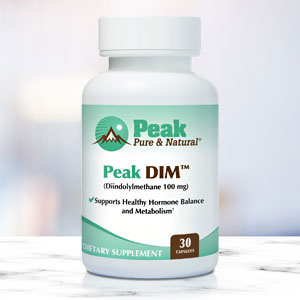Get Easy Health Digest™ in your inbox and don’t miss a thing when you subscribe today. Plus, get the free bonus report, Mother Nature’s Tips, Tricks and Remedies for Cholesterol, Blood Pressure & Blood Sugar as my way of saying welcome to the community!
One more reason to read product labels: Hormone interference

I’m one of those people who takes forever to shop because before I drop a product into my basket, I read every line on the label to make sure there’s nothing bad lurking in it.
It’s a process that drives my husband crazy!
But as far as I’m concerned, it’s also a process that protects my health, the health of my kids and his health, too,…even if he’d rather just grab and go.
Now, the results of a new study have given me some helpful data to cite the next time my husband asks why I can’t simply pick any one of the products in front of me.
So, for all you label readers out there, here’s the information you need to back up your choice. And for those who, like my husband, would rather skip the whole process, here’s proof that reading labels before you buy (or use) a product could be the missing piece in the puzzle of your health.
Hidden endocrine disruptors
The research, performed at the Silent Spring Institute, specifically delved into how checking labels for well-known endocrine disruptors can save you from disease.
If you haven’t heard of them before, endocrine disruptors are chemicals that are widely used in personal care and household products (think deodorants, shampoo, cleaners and dish and hand soaps).
These chemicals, many of which are xenoestrogens (estrogen mimics), have scientists concerned because of the way they can interfere with your body’s hormones and lead to health problems, including::
- Reproductive disorders
- Sex hormone imbalances
- Thyroid hormone imbalances and disease
- Asthma
- Cancers
That concern has only heightened during the current COVID-19 pandemic since disease linked to environmental chemicals have been shown to make people more vulnerable to the virus and its severe effects.
Label readers have a lower body burden
So, the Silent Spring research team set out to determine just how much of a burden these endocrine disruptors create in your body and if making careful product choices can influence the amount of exposure.
They collected urine samples from 726 participants across the United States and analyzed them for 10 common endocrine disruptors. At the same time, they asked each person to complete an online survey that asked questions about the products they use and whether they avoid ones with specific chemicals listed on the label.
Here’s what they found…
After comparing participants, they discovered that:
- People who avoided products with parabens, triclosan, BPA and fragrances were twice as likely to be in the group with the lowest body burden (lowest levels) for all chemicals combined.
- Avoiding certain products and reading ingredient labels was most effective at reducing exposures to parabens, triclosan and benzophenone-3.
- In contrast, people who tried to avoid products containing BPA had levels similar to those who did not avoid the chemical, suggesting there are other sources of BPA that consumers may not be aware of.
What does this mean?
That reading labels works when it comes to lowering exposure to some of the worst endocrine disruptors that we could easily come in contact with daily. And knowing what they can do to your health, I’d say that’s a big pay-off for minimal effort.
Healthier products without harmful chemicals
So, the next time you’re shopping, check out the label of your shampoo, deodorant or household product before buying.
Endocrine disruptors to watch out for include parabens (like Methylparaben), triclosan (found in antibacterial soaps and body washes and even toothpaste) and synthetic fragrances (such as phthalates).
On labels, some are listed this way:
- Bisphenol A (BPA)
- Five chlorophenols (2,4-dichlorophenol (2,4-DCP), 2,5-dichlorophenol, 2,4,5-trichlorophenol, 2,4,6-trichlorophenol, triclosan)
- Two ultraviolet (UV) filters (benzophenone-1, benzophenone-3)
- Eight parabens and their metabolites (benzyl, butyl, ethyl, heptyl, methyl, propyl, 4-hydroxybenzoic acid (4-HB), 3,4-dihydroxybenzoic acid (3,4-DHB)
There are a couple of tools you can use to make identifying and avoiding them easier…
Silent Spring offers a free mobile app, Detox Me, that’s designed to make it easier to reduce chemical exposure in your everyday environment via product choices and simple changes to daily habits.
Another great source to avoid pollutants in your life are consumer guides offered by the Environmental Working Group.
Remember, scouring ingredients on individual product labels is now proven to pay off.
Editor’s note: Did you know that when you take your body from acid to alkaline you can boost your energy, lose weight, soothe digestion, avoid illness and achieve wellness? Click here to discover The Alkaline Secret to Ultimate Vitality and revive your life today!
Sources:
Consumers who avoid products with harmful chemicals on the label have lower body burden — EurekAlert!













